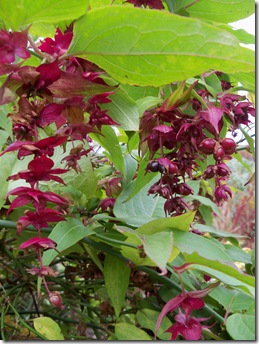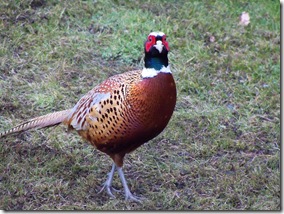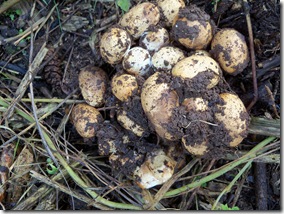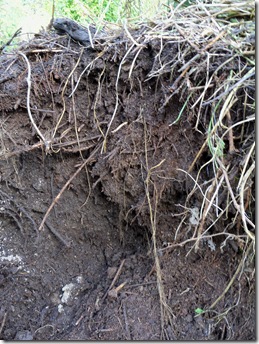Granny's curls, Pheasant Berry, Himalayan Honeysuckle, Flowering nutmeg are all common names for Leycesteria formosa. They are beloved by Pheasants and also Blackbirds (Turdus merula).
Both love the dark purple berries that the Leycesteria now carry at this time of year. The sweet berries attract them as they gradually ripen over the next couple of months. They look juicy and inviting, but I have not yet found anyone finding them to their taste. The flavour I can only describe as sweetish burnt sugar. First it seems okay then a sickliness follows on. Try one and see.
Lecesteria formosa is a shrub well worth growing with a graceful arching aspect to the stems, growing up to 6-7 feet (2-2.5 metres). It first produces white flowers followed by the showy red purple bracts and deep purple fruits.
It is very tolerant of most soils, though it likes to be well drained and moisture holding. Sun or partial shade suits it fine, but some shelter from harsh winds is advisable.
There is a golden leaved form around that will need sun to retain the leaf colour.



